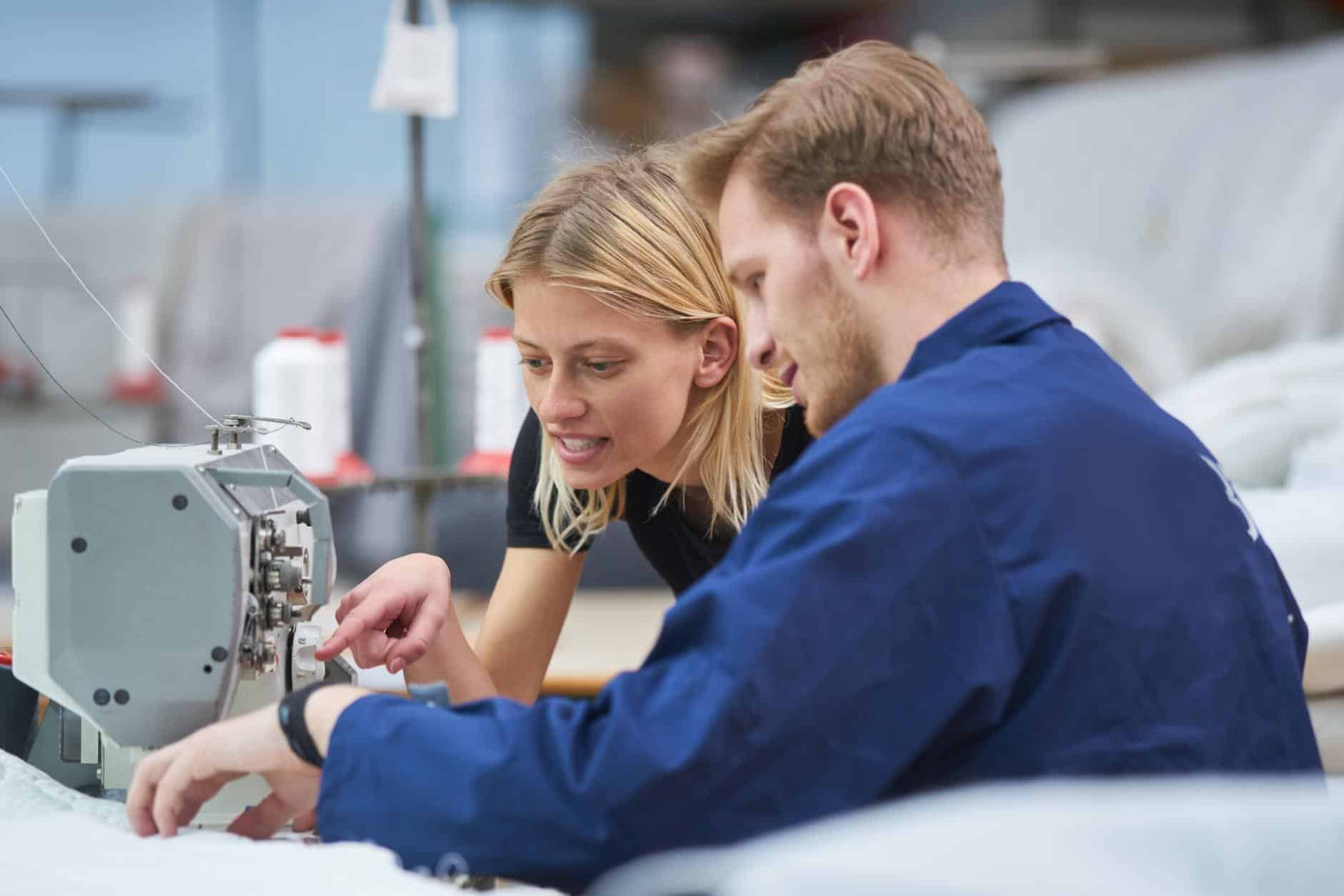The Secret to Efficiency is Lean Manufacturing Kaizen Done Right

Table of Contents
- Understanding Kaizen in Lean Manufacturing
- Core Principles of Kaizen in Lean Manufacturing
- Practical Steps to Implement Kaizen Correctly
- Benefits of Lean Manufacturing Kaizen
- Common Challenges in Applying Kaizen
- How to Sustain Efficiency Through Kaizen
- Vinyl Technology is Your Partner for Precision and Efficiency with Lean Manufacturing Kaizen
Understanding Kaizen in Lean Manufacturing
Kaizen is a philosophy centered on continuous improvement. The term itself is rooted in Japanese, combining the words for “good” and “change.” It perfectly captures the concept of small, consistent improvements that lead to long-term success. In manufacturing, this approach is woven into lean methodologies to eliminate waste and increase operational efficiency.
Lean manufacturing emphasizes minimizing waste and maximizing value in every step of the production process. Kaizen supports this goal by providing a framework for ongoing improvement. Rather than relying on sweeping overhauls, kaizen focuses on incremental changes that compound over time, creating noticeable gains in productivity and quality.
According to the EPA, “Kaizen focuses on eliminating waste, improving productivity, and achieving sustained continual improvement in targeted activities and processes of an organization.”
This philosophy reflects how we operate. Using kaizen is one-way Vinyl Technology leads in manufacturing and industrial sewing. From hiring skilled team members to perfecting the production of our client’s products, every part of the process benefits from a kaizen mindset.
For manufacturers, kaizen works hand in hand with lean principles to streamline workflows. By identifying and removing non-value-adding activities, operations become more efficient and effective. Over time, this creates not just a reduction in waste but also a culture of innovation and progress across the entire organization.
Kaizen isn’t just about efficiency, it’s also about building a system where every small improvement has a lasting impact. By embedding this approach into every process, manufacturers can consistently deliver better outcomes for their partners while maintaining adaptability in a competitive industry.
Core Principles of Kaizen in Lean Manufacturing
Kaizen relies on several core principles that drive its success in lean manufacturing. Teamwork and collaboration are at the heart of this methodology. Success depends on active involvement across all levels of an organization, from leadership to production teams. Every worker contributes insights and ideas.
Another principle of kaizen is the continuous identification and resolution of inefficiencies. This goes beyond obvious waste and can reveal subtle process bottlenecks or redundant steps. By addressing these inefficiencies systematically, manufacturers create smoother workflows and better outcomes.
Kaizen also focuses on building a culture where improvement is everyone’s responsibility. Teams work together to brainstorm, test, and implement small but meaningful changes. Over time, these incremental adjustments compound, resulting in significant operational enhancements.
Kaizen in manufacturing is not new. American businessmen, exposed to Japanese methods during and after World War II, were impressed by the implementation of continuous improvement processes. Masaaki Imai, credited with popularizing kaizen, started a consulting group in 1985 and wrote several books on the subject, making the methodology more accessible worldwide.
At the core of kaizen is the concept of a “quality circle.” This is a group of workers who perform the same or similar tasks and meet regularly to address issues in their workflow. These teams identify problems, propose solutions, and implement changes directly in their areas of expertise. This hands-on approach creates practical, actionable improvements that immediately impact production processes.
Kaizen’s focus on teamwork, problem-solving, and continuous adjustment is what makes it such an integral part of lean manufacturing. By empowering teams and prioritizing collaboration, manufacturers can consistently innovate.
Practical Steps to Implement Kaizen Correctly
The first step in applying kaizen is identifying areas that need improvement. This requires careful observation and gathering data from workflows, processes, or equipment performance. Issues often reveal themselves in small inefficiencies that, when addressed, create significant gains over time.
Clear goals must follow. Aiming for better efficiency or productivity is too vague. Instead, focus on measurable outcomes, like reducing production time by a set percentage or minimizing material waste. Having specific targets gives teams something tangible to work toward.
Simple solutions work best in kaizen. Complex strategies slow progress and discourage team involvement. Start with straightforward changes, like reorganizing workspaces, modifying schedules, or adjusting how tools are used. These adjustments should be practical and easy to implement.
Results must be reviewed consistently. Track the impact of changes to ensure they meet the intended goals. When something doesn’t work as planned, tweak the approach. Continuous improvement means there is no final version of any process—just better iterations.
Benefits of Lean Manufacturing Kaizen
Lean manufacturing kaizen helps reduce production waste and material costs. By identifying unnecessary steps and optimizing workflows, manufacturers cut back on wasted resources and make better use of materials. This directly impacts overall expenses and increases efficiency.
Process reliability and product quality see noticeable improvements. Continuous adjustments address inefficiencies and ensure that each step in production contributes to a consistent, high-quality outcome. This reliability builds trust with clients and strengthens long-term business relationships.
Kaizen also encourages employee engagement. Workers are empowered to identify problems and suggest solutions, creating a sense of ownership and involvement. Teams become more motivated when their ideas directly contribute to meaningful improvements.
Turnaround times for products improve without compromising quality. Small, continuous changes streamline operations, reduce delays, and create a smoother production cycle. Clients benefit from faster delivery while maintaining the same high standards.
Common Challenges in Applying Kaizen
One common challenge is misunderstanding kaizen as a one-time event instead of a continuous effort. Some teams approach it like a project with a defined start and end, which defeats its purpose. True kaizen requires ongoing attention and commitment to improvement.
Resistance from teams can also be an obstacle. Employees unaccustomed to frequent changes may view the process as disruptive or unnecessary. Building trust and explaining how small adjustments lead to long-term benefits can help ease this resistance.
Balancing improvement efforts with maintaining production schedules can create tension. Too much focus on adjusting processes might interrupt daily operations. Effective planning ensures changes happen without compromising output or delivery timelines.
How to Sustain Efficiency Through Kaizen
Sustaining efficiency through kaizen starts with a mindset of continuous learning and adaptation. Teams must stay open to identifying new opportunities for improvement, no matter how small. This mindset keeps operations flexible and forward-thinking.
Systems for tracking and evaluating improvements are essential. Regularly monitoring changes ensures they deliver the intended results. Metrics like production time, material usage, and defect rates provide valuable insights for maintaining progress.
Involving all employees is important for keeping momentum. When everyone participates, the process becomes collaborative and energizes the entire team. Encouraging contributions from all levels creates a shared sense of responsibility for driving ongoing improvements.
Vinyl Technology is Your Partner for Precision and Efficiency with Lean Manufacturing Kaizen
Lean manufacturing kaizen plays a crucial role in boosting efficiency and fostering a culture of continuous improvement. The focus on small, ongoing changes reduces waste, improves product quality, and creates a more engaged workforce. For any organization looking to refine its processes, kaizen offers a practical and effective path forward.
Vinyl Technology has over 40 years of experience as a trusted partner in custom industrial sewing and RF welding. By integrating lean manufacturing with kaizen, Vinyl Technology can keep every step of our process reflecting our commitment to efficiency and ongoing innovation. Our approach combines practical improvements with a focus on teamwork, ensuring that every project benefits from enhanced reliability and reduced costs.
Working with Vinyl Technology means partnering with a team dedicated to precise and efficient manufacturing solutions tailored to unique needs. Our expertise in lean practices and kaizen principles positions us as a valuable resource for industries requiring high-performance solutions. Vinyl Technology incorporates lean manufacturing and kaizen by focusing on small improvements that are easy to implement. We work as a team to solve problems & seek feedback for advancement.
For businesses seeking a dependable manufacturing partner, Vinyl Technology offers the expertise and commitment needed to achieve operational excellence.
Reach out to explore how our solutions can support your goals.

